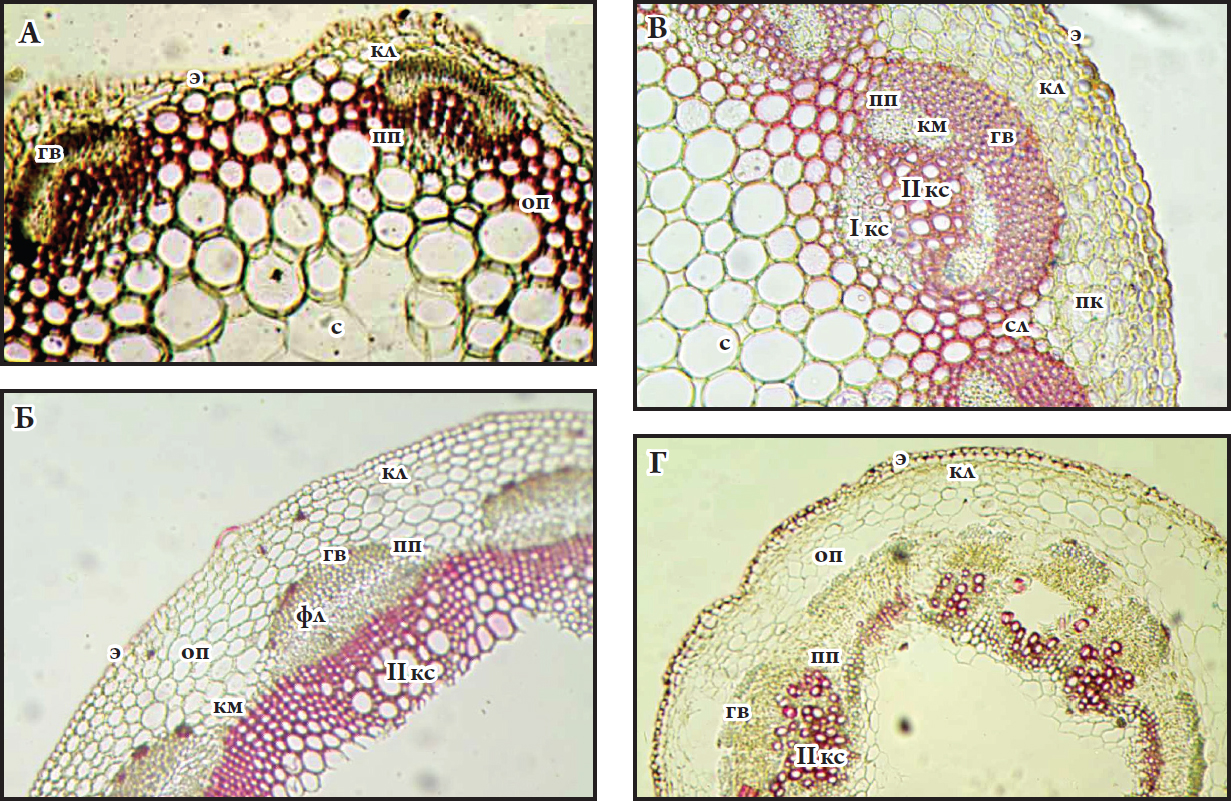Anatomical structure of stems of some species of Trifolium L. in correspondence with the systematics and ecology
Abstract
The article discusses the results of a comparative study of the anatomy of the stems of 4 Trifolium L. species. Complexes of stem anatomical characteristics which can be applied for species diagnostic are described. Anatomy of T. arvense, T. medium and T. montanum shows xerophytic features aimed on desiccation resistance, manifested in three directions: increased functions of epidermal tissue, enhanced development of mechanical tissues, increased development of water conducting system.
References
Еремин В.М., Шкуратова Н.В. 2007. Сравнительная анатомия коры ивовых. Монография. Издательство БрГУ, Брест.
Горышина Т.К. 1979. Экология растений. Высшая школа, Москва.


This work is licensed under a Creative Commons Attribution-NonCommercial-NoDerivatives 4.0 International License.
The journal is licensed by Creative Commons under BY-NC-ND license. You are welcome and free to share (copy and redistribute the material in any medium or format) all the published materials. You may not use the material for commercial purposes. You must give appropriate credit to all published materials.
The journal allow the author(s) to hold the copyrights and to retain publishing rights without any restrictions. This is also indicated at the bottom of each article.





